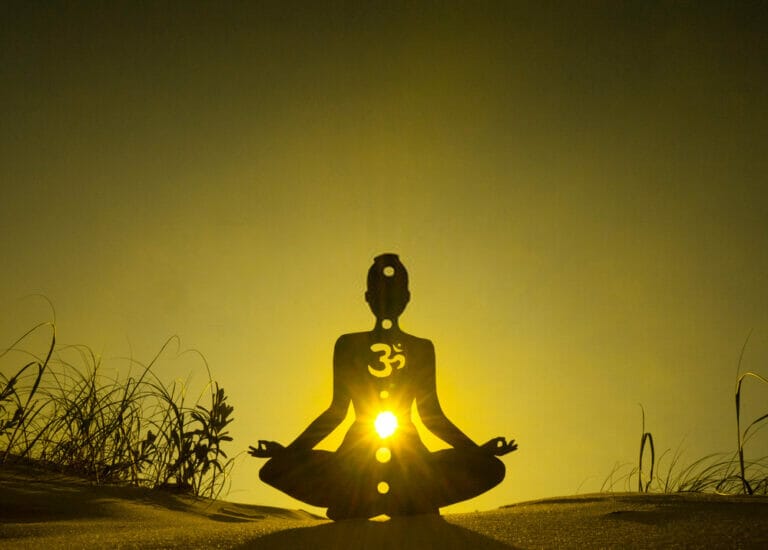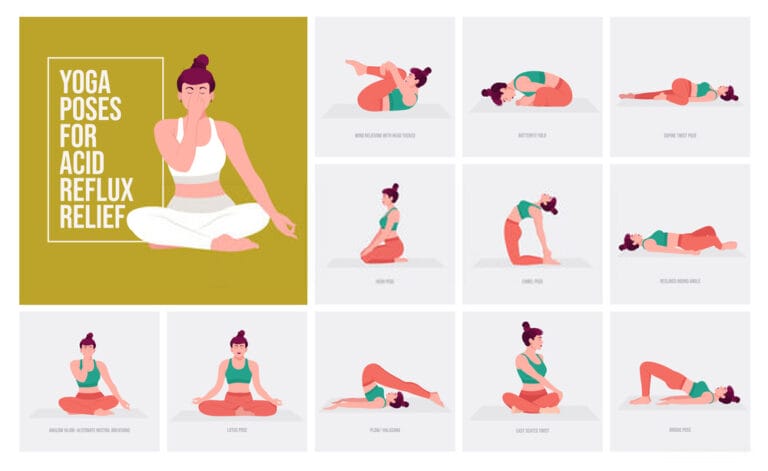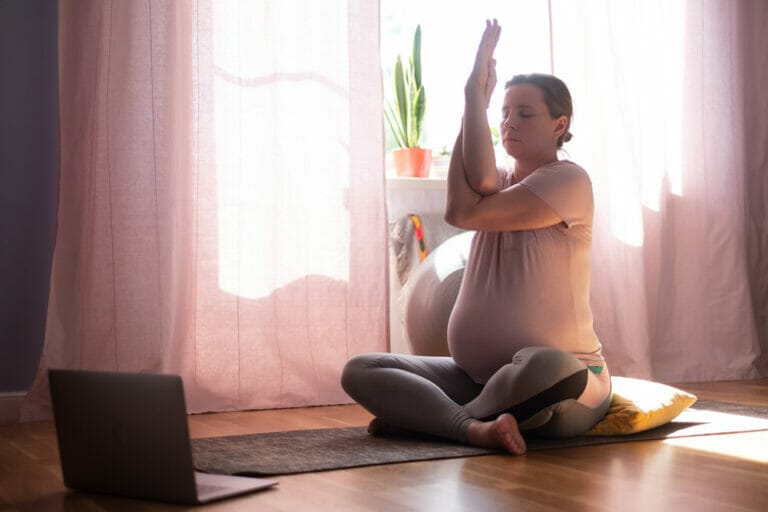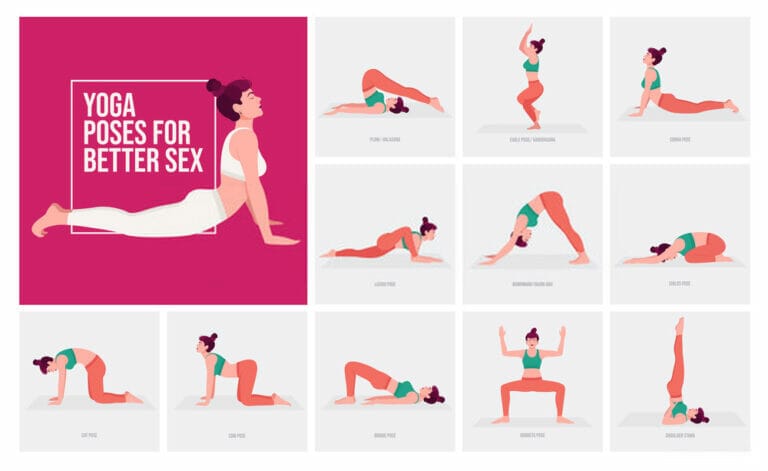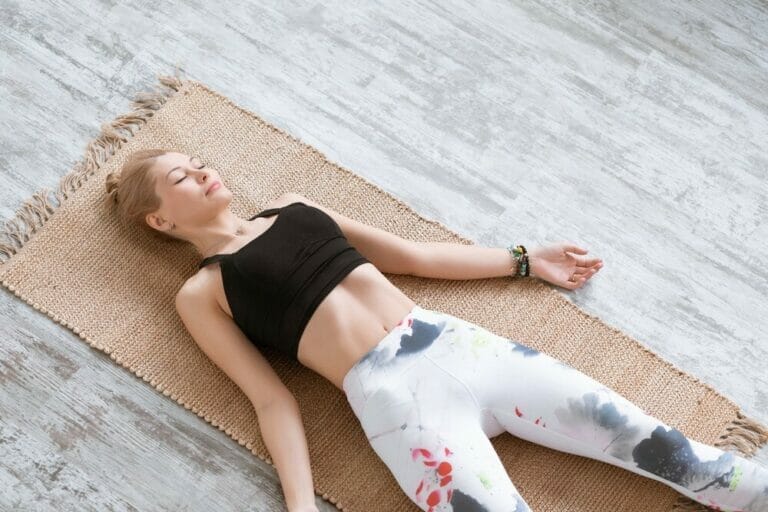If You Have Thyroid, Then This Yoga Poses Are For You
Yoga is a low-impact, easily accessible activity that relieves stress and promotes overall well-being.
Is it possible that yoga might aid in the treatment of thyroid issues?
The thyroid gland is tiny and is located in the neck that produces hormones. The metabolism, body temperature, and growth of a person are all affected by these hormones. They also have an impact on how a child's brain grows.
When a person’s thyroid is malfunctioning, it can harm both their physical and mental health.
Yoga has several advantages for your general health and well-being. For example, it can help you feel more energized, more flexible, and less stressed. In addition, some yoga poses help to cure underactive or hyperactive thyroids.
It is found that yoga has a beneficial effect on thyroid function in several studies. However, keep in mind that these postures will not be able to heal your thyroid problem.
Yoga is a supplementary treatment. It shouldn’t be utilized to substitute any therapy or drugs you’re taking right now.
Seek a skilled yoga teacher who can assist you in creating a personalized yoga routine that will benefit your condition. Before starting any yoga program, consult your doctor.
Let’s now look at a few of the yoga poses that may induce healing in the thyroid.
Supported shoulder stand
The supported shoulder stand posture requires you to be upside down, which is an inversion in yoga.
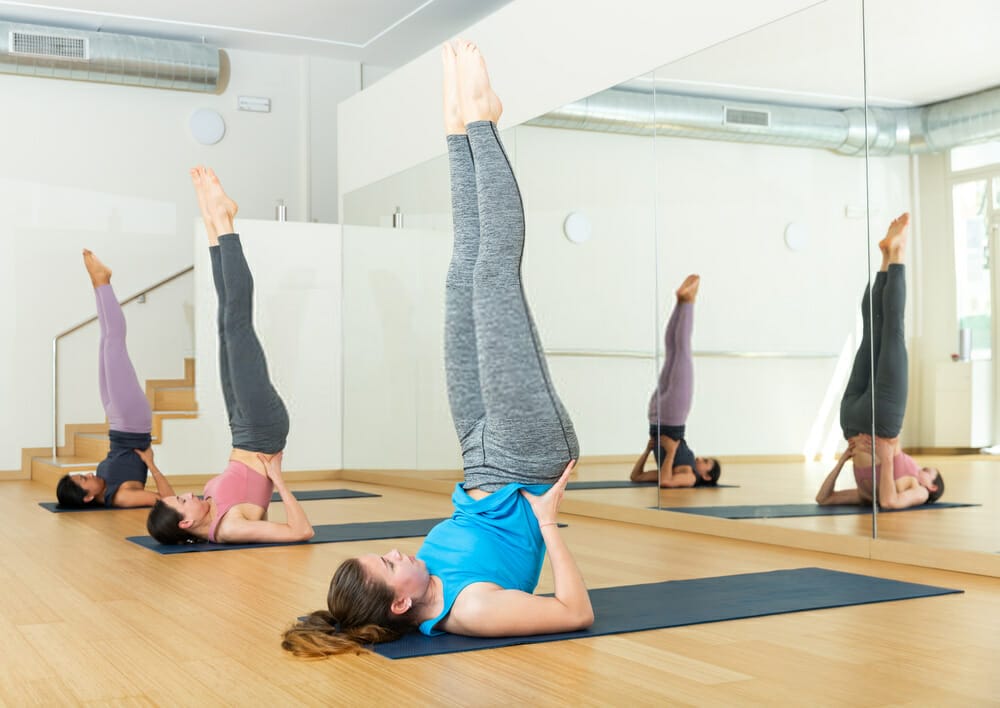
Inversions aid increased blood flow to the neck. According to yoga experts, this helps to activate the thyroid. Sarvangasana is the Sanskrit word for this position.
- For further support, place a folded towel or blanket beneath your shoulders.
- Bring your shoulders to the blanket’s edge and place your head on the mat.
- Lie down flat on your back, arms beside your body, palms facing down.
- For support, press your arms and back against the floor.
- Raise your legs to 90 degrees
- Raise your legs above your head.
- To support your body, bring your hands to your lower back.
- With your pinky fingers on either side of your spine, keep your fingertips pointing up toward your hips.
- Raise your legs to the ceiling, straight up.
Plow pose
The thyroid is said to be stimulated by the Plow Pose. Halasana is the Sanskrit word for this position.
A person should begin the Plow Pose in the same way as they would for a shoulder stand.
- Lie down flat on your back, arms beside your body, palms facing down.
- For support, press your arms and back against the floor.
- Raise your legs to 90 degrees on an inhale.
- Exhale slowly and raise your legs above your head.
- To support your body, bring your hands to your lower back.
- With your pinky fingers on either side of your spine, keep your fingertips pointing up toward your hips.
- If your feet don’t reach the floor, put a bolster or a block under them.
- If your feet do not touch the floor or the object, keep your hands on your hips.
Legs-up-the-wall pose
Legs-up-the-wall posture, also known as Viparita Karani, is a restorative inversion. It is suitable for most people and does not impose pressure on the neck.

It's a great option because it's passive and helps you regain your equilibrium.
- For further support, place a folded blanket or hard cushion beneath your hips.
- Sit against the wall on your right side.
- At the exact moment that you lie back, lift your legs along the wall.
- It doesn’t matter if your buttocks are right up against the wall or a few inches away from it.
- Relax your neck and chin while softening your throat.
- Keep your arms beside your body, above your head, or in any other posture that is comfortable for you.
- Hold this posture for at least 20 minutes.
Boat Pose
The Boat Pose is beneficial for core strength. It also stimulates the throat and may help with thyroid issues. Navasana is the Sanskrit word for this position.
- Sit with your legs stretched in front of you on the floor.
- Place your hands alongside you on the floor.
- Lean your upper body back a little at a time.
- Maintain a straight spine and tuck your chin into your chest.
- You should be able to balance on your two sitting bones as well as your tailbone.
- Before you lift your legs into the air, bend your knees.
- If at all possible, straighten your knees.
- Bring your toes up to the level of your eyes.
- Raise your arms parallel to the ground, and your palms are facing each other.
- If it’s more comfortable, you can grip the backs of your thighs or keep your hands on the floor.
- Hold this position for up to a minute.
Fish pose
After a shoulder stand or Plow, the Fish Pose is a great way to stretch the body in the other direction. It is known as a counter posture in yoga.
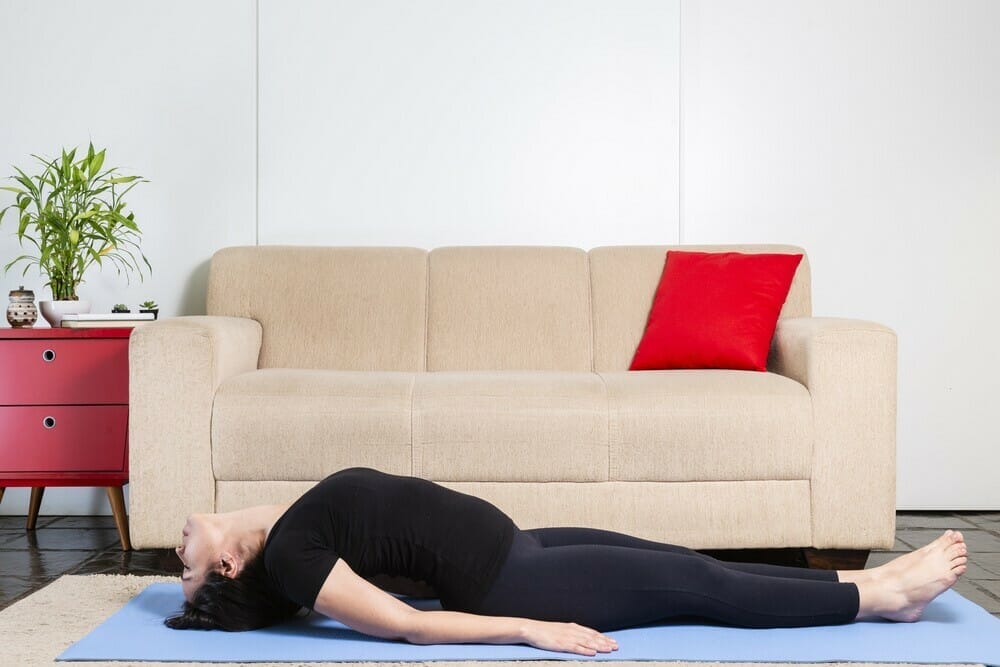
Matsyasana is the Sanskrit word for this position. The Fish Pose is easy to learn and excellent for beginners.
- Sit on your buttocks, legs stretched out in front of you.
- To position your hands below your buttocks, go to one side at a time.
- Your palms should be facing down, and your fingers should be pointing toward your toes.
- Open your chest and draw your elbows into each other.
- Lean back on your forearms and elbows slowly.
- To keep elevated, expand your chest as much as possible and press onto your arms.
Cobra pose
The Cobra Pose gently stimulates the thyroid and throat. Bhujangasana is the Sanskrit word for this position.
- Lie down on your stomach with your palms pushing down and your hands below your shoulders.
- Squeeze the sides of your chest with your elbows.
- As the energy of your thumbs draws back, press onto your hands. Feel your pinky fingers’ energy going forward.
- Slowly elevate your head, chest, and shoulders as you inhale.
- Come up.
- Keep your elbows bent slightly.
- Allow your head to sink back if it is comfortable.
- Bring your head back to the centre to exit the position.
- Slowly lower yourself back to the mat on an exhale.
- 1Keep your arms at your sides and relax.
Upward Bow Pose
The Upward Bow Pose, also known as the Wheel Pose, gives you energy by extending your chest and lungs.

It strengthens the arms, legs, and spine while stimulating the thyroid and pituitary glands. Urdhva Dhanurasana is the Sanskrit term for this position.
- Begin by lying on your back with your knees bent and your feet hip-width apart on the ground. Your feet’ outside edges are parallel.
- Bend your elbows and position your hands shoulder-width apart on either side of your head, fingers pointing toward your shoulders.
- Lift your hips and stretch your arms by pressing evenly onto your feet and hands.
- Stay here for at least three deep breaths, pushing into your feet via your big toes and extending your chest away from your feet.
Cat-cow pose
The fluid motion of the cat-cow position stimulates your thyroid. Blood flow to the throat chakra increases by drawing your chin into your chest and then exposing it.
Cat-cow is one of the most common exercises in yoga practice. Some practitioners call this movement "the most basic yoga."
It’s a great way to warm up for other poses and is beneficial to do regularly. It is known as Marjaryasana I and Bitilasana I in yoga.
- Place your wrists precisely beneath your shoulders and your knees directly beneath your hips on all fours.
- Move your weight from side to side and forward and backwards.
- Return to the middle and make sure all four points are equally weighted.
- Inhale and sink towards the mat, allowing your belly to fill with air.
- Lengthen your neck and throat by looking up towards the ceiling.
- Draw your navel into your spine as you exhale.
- Lift and curve your spine toward the ceiling, tucking your chin towards your chest.
- Allow the movement to be guided by your breath.
- Continue this motion for a few minutes.
Supported Headstand Pose
The Supported Headstand Pose is a more advanced yoga pose that directly affects the thyroid glands.
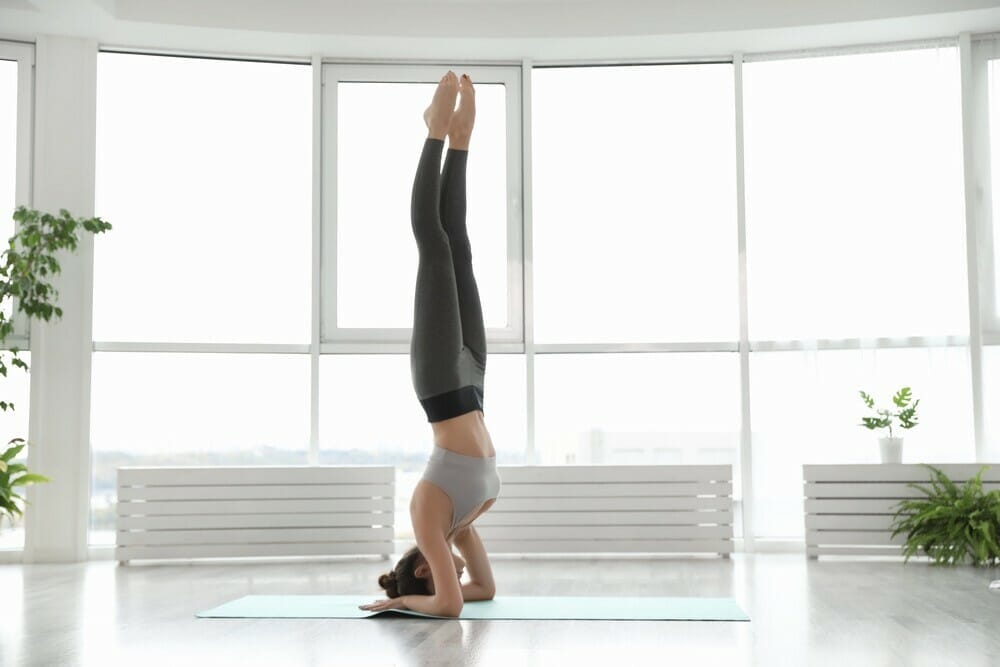
The position improves blood flow to the heart and stimulates the pituitary and pineal glands in the brain, which helps to reduce stress.
Do not attempt this position without prior yoga expertise, and you should do it under the guidance of an experienced teacher on the first try.
Sirsasana is the Sanskrit word for this position.
- Put two stacks of three yoga blocks against the wall, about a head’s width apart, with the thinnest portion of the blocks against the wall and the middle section of the blocks against the wall.
- Kneel with your back to the wall and your hands in front of the blocks, fingers brushing the blocks.
- Put your shoulders on the blocks with your head looking down.
- Walk your feet toward your hands as you lengthen your legs.
- Bring your heel to your buttocks by bending one knee in.
- Bring your heel nearer your buttocks by bending your other knee in. Inhale deeply into this egg form.
- As you extend your feet toward the ceiling, slowly lengthen your legs.
- If you like, you can rest your feet on the wall.
Bottom Line
Yoga is an excellent exercise for those who suffer from hypothyroidism. It promotes relaxation, helps with breathing, and offers many different poses and activities to fit any individual’s physical condition.
Including any or all of these yoga postures in your regimen may aid in thyroid function improvement. On a daily level, do what feels best. Every day, try to perform at least a little yoga.
These poses may lead you to new variants and postures that are most beneficial to you. Always pay attention to your body’s signals. Consider how each posture affects you, particularly your thyroid.


